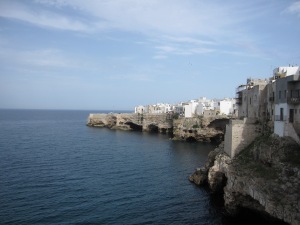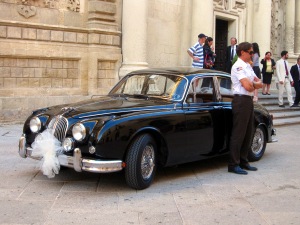Overhead view of Vernazzo, on the trail towards Monterosso
What is Cinque Terre?
Cinque Terre, or “five lands,” is a series of small seaside towns in the Italian Riviera, in the Liguria region. It is widely known for being one of the most beautiful places on earth, and is recognized as a UNESCO Heritage Site. Visitors can hike the trails between the five towns and be rewarded with gorgeous cliffside views of the sea. Unfortunately, the booming popularity of the region has turned Cinque Terre into something more akin to Disneyland, particularly during the high summer season. The influx of American tourists toting Rick Steve’s guidebooks, kitschy souvenir shops and high prices has warped the towns into a bit of a tourist trap, where more English is spoken than Italian.
Where do we get a terrible night’s sleep?
I highly recommend the apartments at 9 Via Visconti. When we were looking for rooms (about 10 days before), this was literally the last room left in town, and at a rather pricey €45 per person to boot. However, the apartment was centrally located, and we’d wanted easy beach access which is available in Vernazza. Good thing our money was going towards a friendly landlord, who told us he was “very busy” when we asked if he could replace the broken fan, and that we could leave if we didn’t like the apartment because there were “lots of other people waiting for the room.” Cramped beds and stifling heat aside, there is a dance party on the beach till 1 am on Saturday nights, so you can toss and turn to the pulsating beat of Lady Gaga. Normally, I wouldn’t have minded this (I’d be out on the beach dancing), but we had decided to go hiking the next morning at 8 am…After the DJ sent everyone home, the neighbors came trooping in. As it turns out, our central hall was also the hallway leading to two other apartments, and those doors were not storage closets after all. There’s nothing like meeting the neighbors as you lie sprawled out in bed. And for the finale, a flock of curiously nocturnal seabirds began squawking noisily at each other. This symphony continued for the rest of the night, as I dreamed about the number of ways I could roast the seagulls.
Continue reading Infrequently Asked Questions on Cinque Terre









